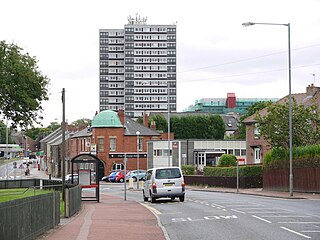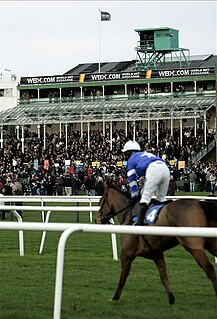Related Research Articles

John Blenkinsop was an English mining engineer and an inventor of steam locomotives, who designed the first practical railway locomotive.

Middleton is a largely residential suburb of Leeds in West Yorkshire, England and historically a village in the West Riding of Yorkshire. It is situated on a hill 4 miles (6 km) south of Leeds city centre and 165 miles (266 km) north north-west of London.

Felling is an eastern suburb of Gateshead, Tyne and Wear, England. The town was formed when three villages coalesced in the 19th century. Historically part of County Durham, the town was subsumed into the metropolitan borough of Gateshead in 1974. It lies on the B1426 Sunderland Road and the A184 Felling bypass, less than 1 mile (1.6 km) east of Gateshead town centre, 1 mile (1.6 km) south east of Newcastle-upon-Tyne and 10 miles north west of the City of Sunderland. In 2011, Felling had a population of 8,908.
Wideopen, also occasionally spelled Wide Open, is a village in the North Tyneside metropolitan borough of Tyne and Wear, England, around 5 miles (8.0 km) north of Newcastle.

The Middleton Railway is the world's oldest continuously working railway, situated in the English city of Leeds. It was founded in 1758 and is now a heritage railway, run by volunteers from The Middleton Railway Trust Ltd. since 1960.

Gosforth is a suburb of the city and metropolitan borough of Newcastle upon Tyne, England. It constituted a separate urban district from 1895 until 1974 before officially merging with the city of Newcastle upon Tyne. In 2001, it had a population of 23,620.

Gosforth Park is a park north of Gosforth in the city of Newcastle upon Tyne, England. It houses Newcastle Racecourse, Virgin Money Unity Arena, a Britannia hotel, two golf courses, a garden centre and a football centre. It is also home to Gosforth Nature Reserve, a private SSSI managed by the Natural History Society of Northumbria, consisting of a lake and woodland.

Charles William Bigge was an English merchant and banker in Newcastle on Tyne.
William Ord was an English land and mine owner.
Shotton Hall is a Grade II listed building, formerly a mansion house, now operated by Peterlee Town Council as offices and a conference centre.

Gosforth House now known as Brandling House is a Grade II listed building built as a mansion house and now serving as a hospitality and conference centre at Gosforth Park Racecourse, Newcastle upon Tyne, England.
Coxlodge is an area situated between Fawdon, Gosforth and Kenton in Newcastle upon Tyne, England.
Seaton Burn is a village in Tyne and Wear, England to the north of Newcastle upon Tyne, and adjacent to Wideopen which is just south of it. The A1 used to pass through the village but now bypasses the village just to the west, where it meets the A19 which is the link road to the Tyne Tunnel.
The Shafto family is an alternative surname for the Ffolliot family, who were established in the 14th century at Shafto Crag, Northumberland and adopted the alternative surname of Shafto.
John Hodgson (1779–1845) was an English clergyman and antiquary, known as the county historian of Northumberland.
Robert Brandling (1575–1636) was an English landowner and politician who sat in the House of Commons from 1621 to 1622.

Thomas Emerson Forster was an eminent English mining engineer.
William Bigge (1707–1758) was an English lawyer, landowner and colliery owner.

Charles John Brandling was an English MP and coal owner.

Shotton Bridge railway station was a railway station built by the North Eastern Railway (NER) on the route of the Hartlepool Dock & Railway (HD&R) as part of a programme of works to modernise that line and link it with the Durham & Sunderland Railway (D&SR) so as to create a railway through-route between West Hartlepool and Sunderland. On opening, the station served the relatively new village of Shotton Colliery, which grew around the nearby Shotton Grange Colliery, as well as Old Shotton on the Stockton to Sunderland turnpike road, further to the east.
References
- ↑ Newbould, John (27 April 2020). "Middleton History Index". Friends of Middleton Park. Retrieved 18 October 2020.
- ↑ "Charles John Brandling". Grace's Guide . Retrieved 18 October 2020.
- ↑ Leeds City Engineers Department. "Middleton Lodge, Middleton Park". Leodis. Retrieved 18 October 2020.
- ↑ "Middleton Broom Colliery". Northern Mine Research Society. Retrieved 18 October 2020.